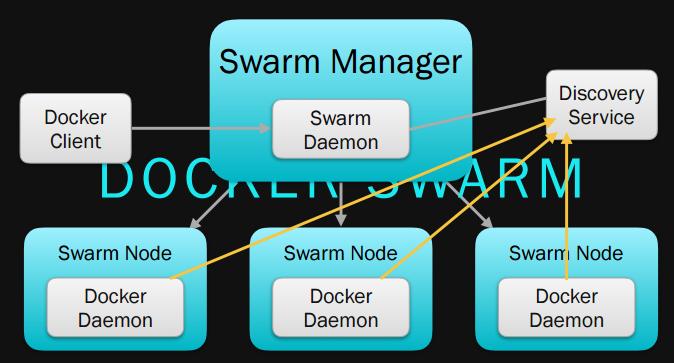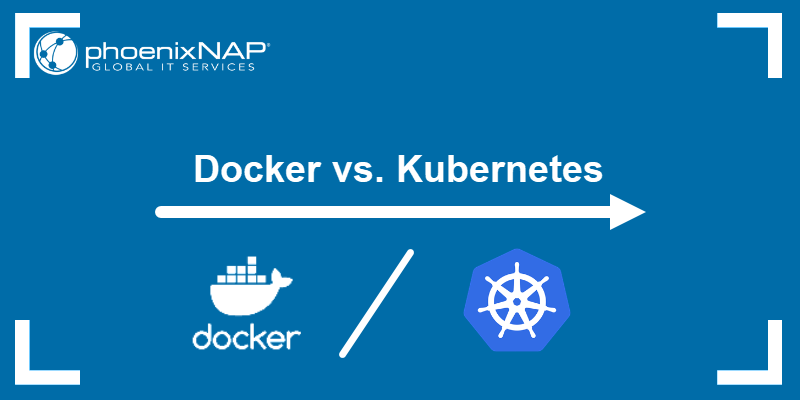
- Docker swarm vs kubernetes pod full#
- Docker swarm vs kubernetes pod software#
- Docker swarm vs kubernetes pod trial#
Global scheduling is very useful for utility containers for tasks such as logging and monitoring. At the most basic level, units can be scheduled as global, meaning an instance will run on all machines, or as a single unit which will run on a single machine. The architecture is designed to be fault-tolerant if a machine dies, any units scheduled on that machine will be restarted on new hosts.įleet supports various scheduling hints and constraints. Etcd is used to enable communication between machines and store the status of the cluster and units. The agent takes care of starting the unit and reporting state. The unit file will normally simply run a container. Systemd unit files (henceforth units) are submitted to the engine, which will schedule the job on the “least-loaded” machine. Only one engine is active in the cluster at any time, but all agents are constantly running (for the sake of the diagram, the active engine is shown separately to the machines, but it will be running on one of them). Each machine runs an engine and an agent. The technical architecture of fleet is shown in Figure 12-2. Fleet reads systemd unit files, which are then scheduled on a machine or machines in the cluster. Whereas systemd provides system and service initialization for a single machine, fleet extends this to a cluster of machines. The most distinguishing feature of fleet is that it builds on top of systemd. It bills itself as a “low-level cluster engine”, meaning that it is expected to form a “foundation layer” for higher-level solutions such as Kubernetes. Fleetįleet is the cluster management tool from CoreOS. By default, token based discovery is used, where the addresses of hosts are kept in a list stored on the Docker Hub. There are several different methods for how hosts are found and added to a cluster, which is known as discovery in Swarm. Swarm can be run in a high-availability mode where one of etcd, Consul or ZooKeeper is used to handle fail-over to a back-up manager. The manager is responsible for the orchestration and scheduling of containers on the hosts. The basic architecture of Swarm is fairly straightforward: each host runs a Swarm agent and one host runs a Swarm manager (on small test clusters this host may also run an agent).

This also means that other tools which use the Docker API - such as Compose and bespoke scripts - can use Swarm without any changes and take advantage of running on a cluster rather than a single host. Swarm uses the standard Docker API, meaning containers can be launched using normal docker run commands and Swarm will take care of selecting an appropriate host to run the container on.


Swarm is the native clustering tool for Docker.

Along the way, we’ll consider scaling and automatic failover, which are important features. Let’s focus on orchestration tools, which help make all the pieces work together, working with the cluster to start containers on appropriate hosts and connect them together.
Docker swarm vs kubernetes pod software#
Various software tools and solutions exist to help with these challenges. When a machine develops a problem it should be destroyed and replaced, rather than nursed back to health. It quickly becomes impossible to look after machines on an individual level rather than patching and updating machines one-by-one they must be treated identically.
Docker swarm vs kubernetes pod full#
Balancing cost-effectiveness against the ability to quickly scale is difficult task that can be approached in a variety of ways.Īll of this means that the running a non-trivial system is full of administrative tasks and challenges, the complexity of which should not be underestimated. When using multiple resources, it is important to make sure they are efficiently used - not sitting idle - but can still cope with spikes in demand.
Docker swarm vs kubernetes pod trial#
Get a free trial today and find answers on the fly, or master something new and useful. Join the O'Reilly online learning platform.


 0 kommentar(er)
0 kommentar(er)
